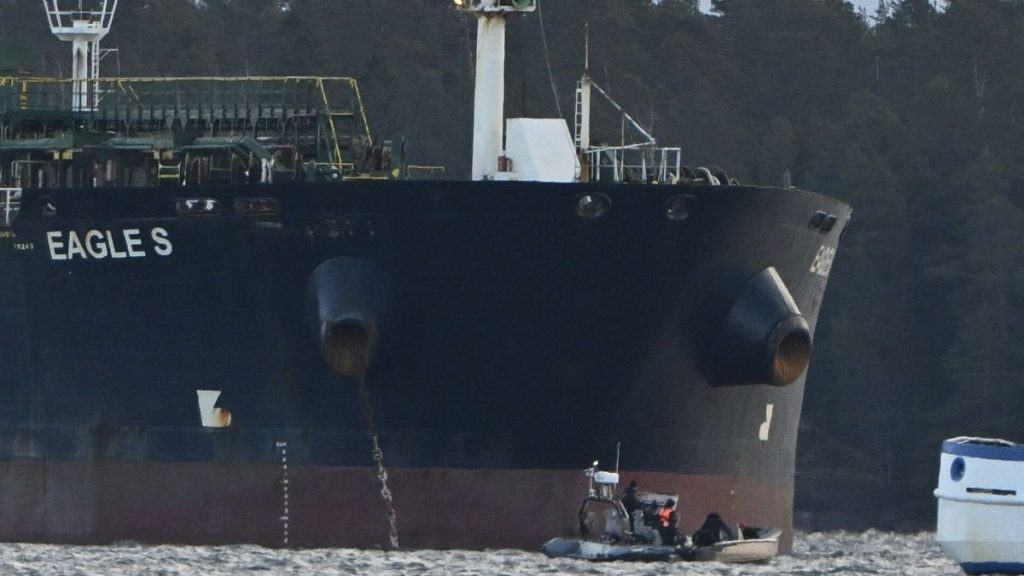The incident involving the Eagle S tanker and the Estlink-2 power cable highlights the growing concerns surrounding maritime security in the Baltic Sea region. On Christmas Day 2023, the Estlink-2 power cable, a crucial energy link between Finland and Estonia, experienced an outage. Subsequent investigations pointed to the Eagle S, a Cook Islands-flagged tanker linked to Russia, as the primary suspect. Finnish authorities believe the tanker’s anchor dragged along the seabed, damaging the cable. While the power outage had minimal impact on services, the incident triggered a swift response from Finnish authorities, who boarded and seized the Eagle S, moving it to port for a thorough investigation.
The Eagle S, identified as part of Russia’s “shadow fleet,” operates under a veil of obscured ownership and often lacks Western-regulated insurance. This fleet, primarily used to transport oil and gas in defiance of international sanctions imposed on Russia following its invasion of Ukraine, has raised significant concerns about potential environmental disasters due to the vessels’ age and questionable insurance coverage. The incident involving the Estlink-2 cable further amplified these worries, adding another layer to the already complex geopolitical landscape of the Baltic Sea. The timing of the incident, occurring on Christmas Day, added to the gravity of the situation, potentially signifying a deliberate act of disruption.
The Finnish police detained the 24-member crew of the Eagle S, imposing movement restrictions on eight individuals suspected of direct involvement in the cable damage. The investigation aims to determine the precise sequence of events leading to the incident and identify those responsible for navigating the ship at the time. The number of individuals facing restrictions could fluctuate as the investigation unfolds and more information emerges. The incident spurred high-level discussions and increased security measures, reflecting the heightened sensitivity surrounding critical infrastructure in the region.
The incident involving the Estlink-2 power cable follows a pattern of similar incidents in the Baltic Sea, raising concerns about potential sabotage targeting undersea infrastructure. In November 2023, two data cables, one connecting Finland and Germany and the other linking Lithuania and Sweden, were severed. While the German defense minister suspected sabotage, concrete evidence and attribution remained elusive. Furthermore, the September 2022 explosions that damaged the Nord Stream pipelines, which transported natural gas from Russia to Germany, were also attributed to sabotage, triggering criminal investigations and raising alarm bells across Europe.
These incidents, occurring against the backdrop of Russia’s ongoing war in Ukraine and heightened tensions between Russia and the West, have prompted increased vigilance from NATO and its allies. NATO Secretary General Jens Stoltenberg’s conversation with Finnish President Alexander Stubb, where they agreed to enhance NATO’s military presence in the Baltic Sea, underscores the seriousness of the situation. Finland, sharing a long border with Russia and having recently joined NATO in response to the Ukraine invasion, is particularly vulnerable to such incidents. The increased NATO presence aims to deter further acts of sabotage and reassure regional allies.
The suspected sabotage of undersea cables and pipelines represents a new dimension of hybrid warfare, where critical infrastructure becomes a target. This tactic creates uncertainty, disrupts vital services, and adds pressure on governments without direct military confrontation. The incidents also highlight the vulnerability of undersea infrastructure, which is often difficult to protect and monitor. The response from NATO and regional allies, including increased patrols, deployment of maritime patrol aircraft, long-distance radar planes, drones, and minehunters, reflects the growing recognition of this vulnerability and the determination to safeguard critical infrastructure from future attacks. While Finnish President Stubb assured the public that the situation was under control, the continued investigation and heightened security measures underscore the ongoing concern and the need for continued vigilance in the Baltic Sea region.

